Featured publications
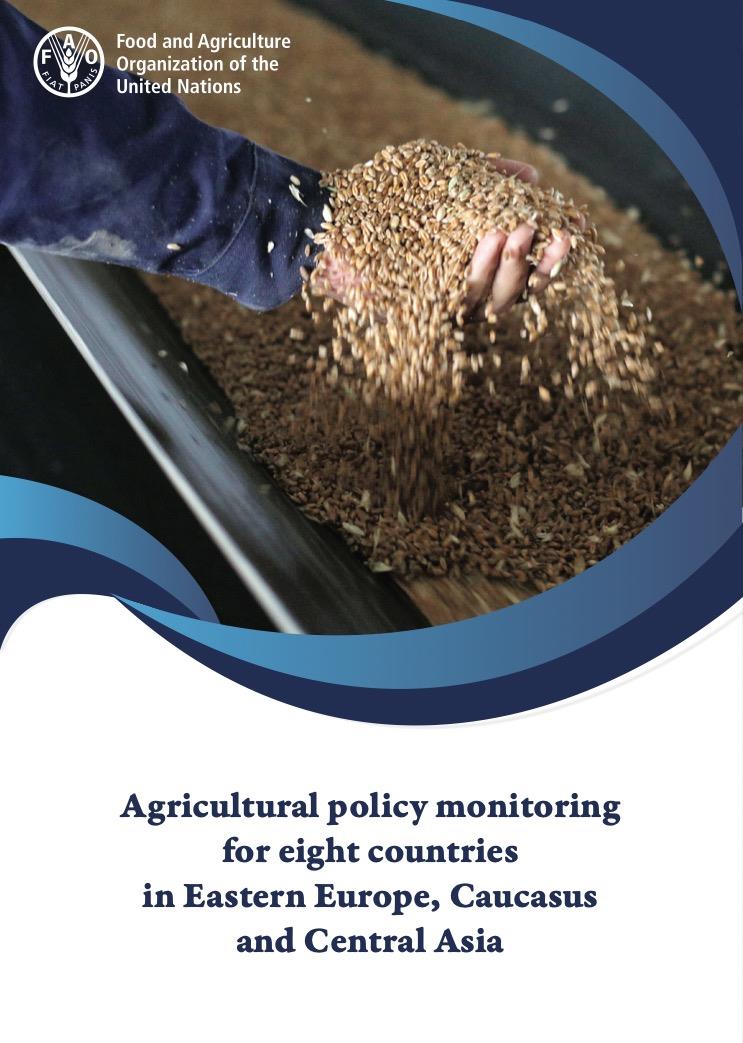
Book (stand-alone)
Agricultural policy monitoring for eight countries in Eastern Europe, Caucasus and Central Asia
17/11/2022
This study reviews the agricultural policy environment and provides quantitative indicators for policy incentives and disincentives to agricultural...
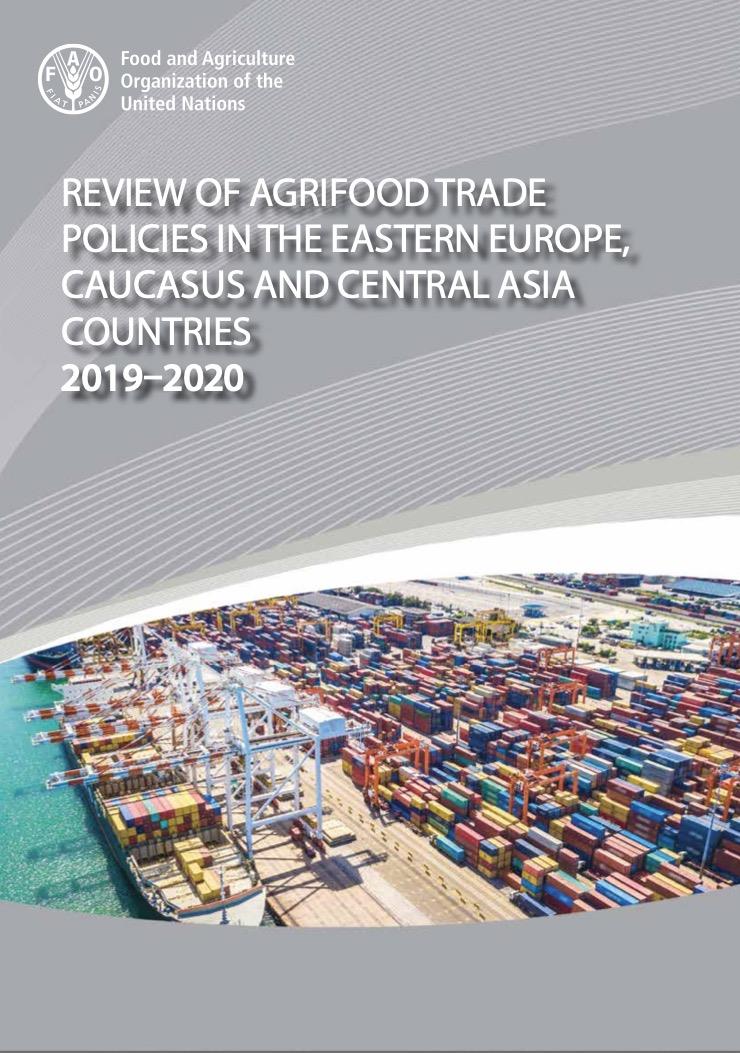
Book (series)
Review of agrifood trade policies of the Eastern Europe, Caucasus and Central Asia countries, 2019–2020
09/11/2022
This review is devoted to the analysis of the agricultural trade policy of the Eastern Europe, the Caucasus and Central Asia countries. The purpose...
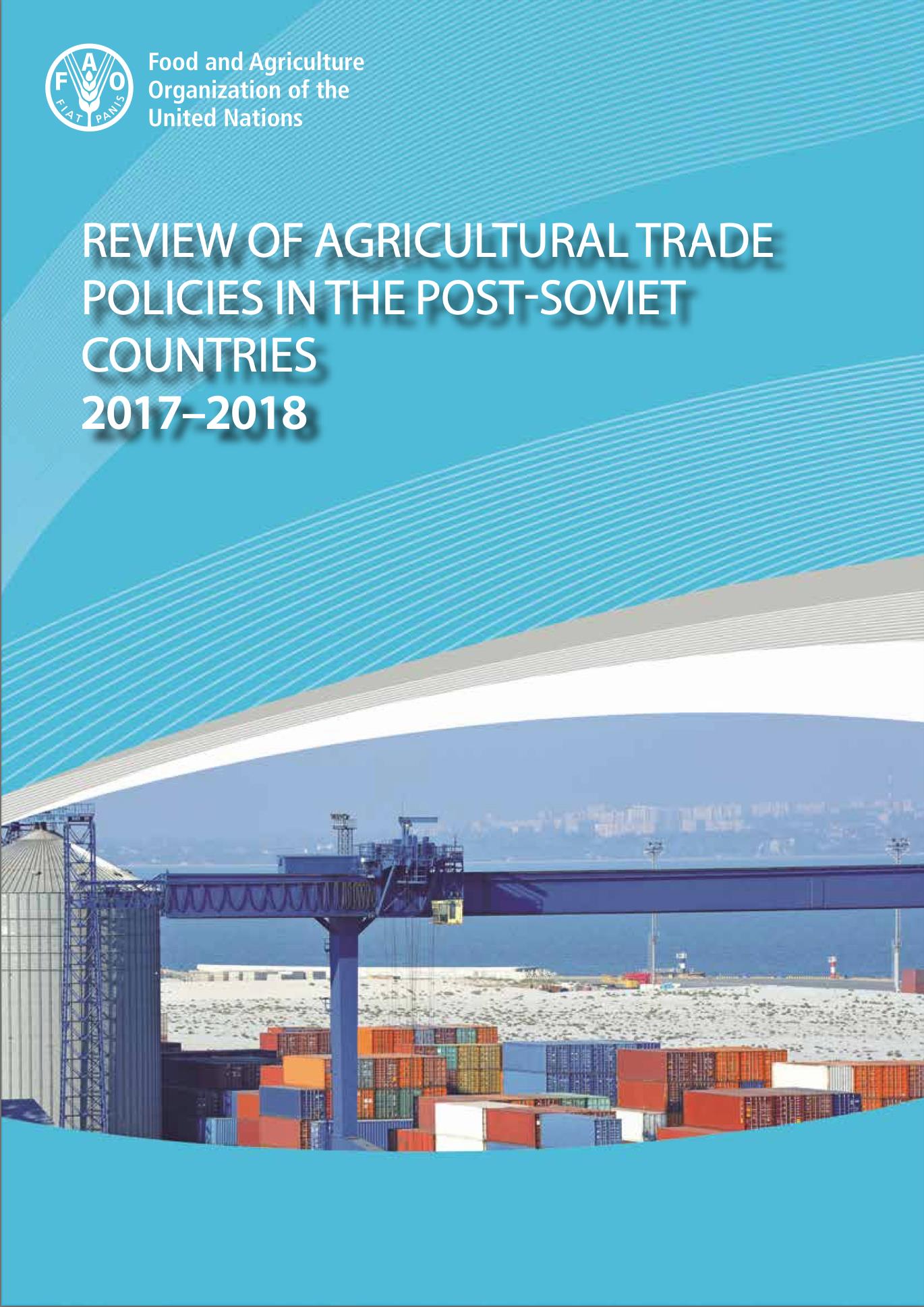
Review of agricultural trade policies in post-Soviet countries 2017–2018
25/06/2020
The publication presents analysis of agricultural trade policies in post-Soviet countries. The aim of the review is to monitor the latest changes in...
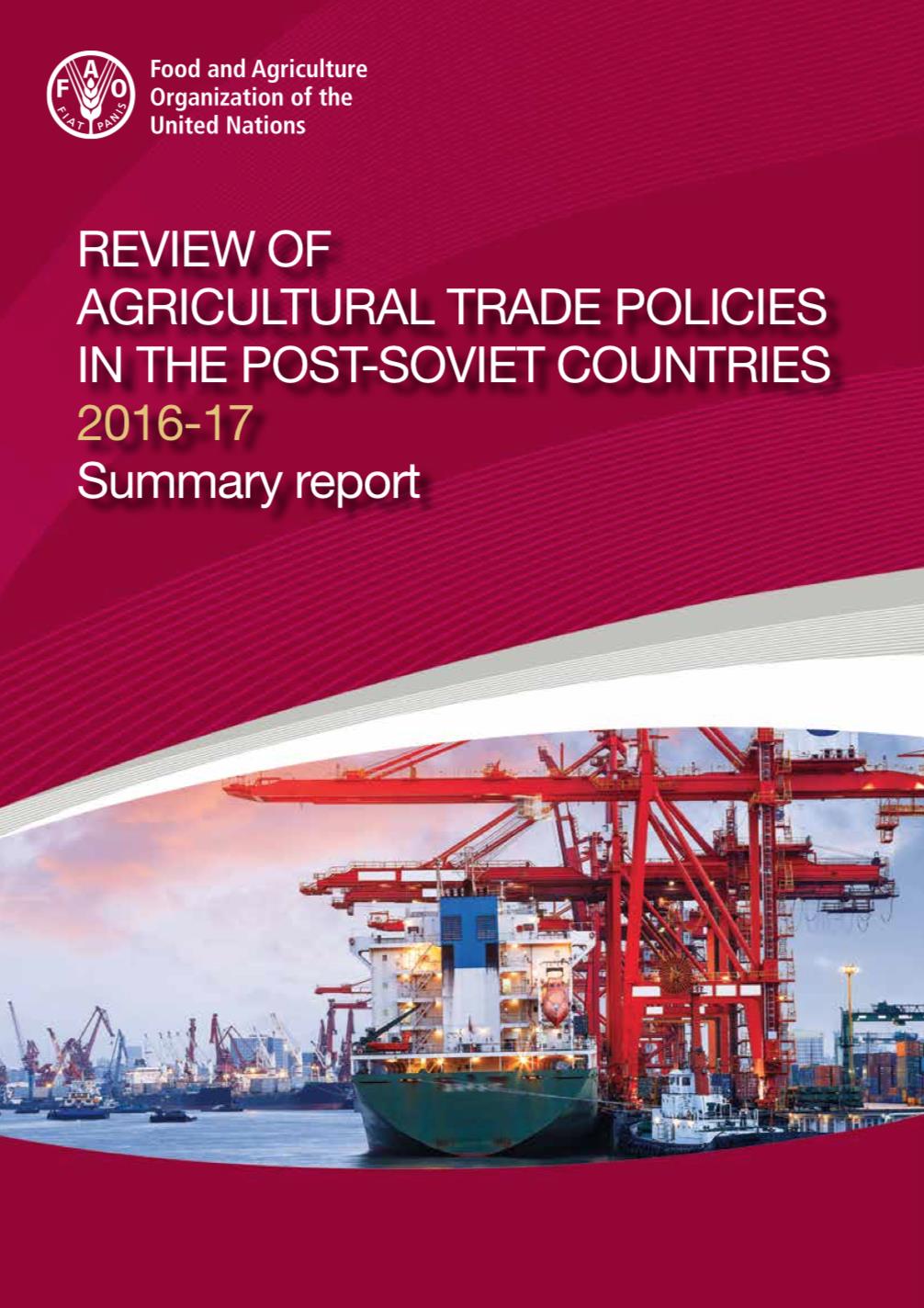
Review of Agricultural Trade Policies in Post-Soviet Countries, 2016-2017
13/09/2018
This document presents an English summary of the “Review of Agricultural Trade Policies in the post-Soviet countries 2016-2017” (FAO, 2018) available...
Publications

Agricultural policy monitoring for eight countries in Eastern Europe, Caucasus and Central Asia
17/11/2022
This study reviews the agricultural policy environment and provides quantitative indicators for policy incentives and disincentives to agricultural producers for key commodity value chains in the eight study countries in Eastern Europe, Caucasus and Central Asia (Armenia, Azerbaijan, Belarus, Georgia, Kyrgyzstan, the Republic of Moldova, Tajikistan and Uzbekistan).

Review of agrifood trade policies of the Eastern Europe, Caucasus and Central Asia countries, 2019–2020
09/11/2022
This review is devoted to the analysis of the agricultural trade policy of the Eastern Europe, the Caucasus and Central Asia countries. The purpose of the review is to monitor the latest developments in the trade policies of these countries that have an impact on the dynamics and structure of trade.

Review of agricultural trade policies in post-Soviet countries 2017–2018
25/06/2020
The publication presents analysis of agricultural trade policies in post-Soviet countries. The aim of the review is to monitor the latest changes in trade policies of these countries, affecting the dynamics and structure of trade. The publication includes a chapter with an overview of the prospects for expanding the agricultural trade of some Central Asian countries with China and the Russian Federation, and a chapter about the impact of climate change on agricultural trade in Eastern Europe and Central Asia.
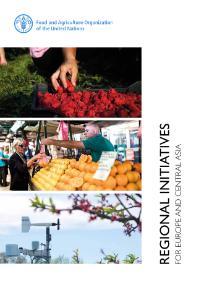
Regional Initiatives for Europe and Central Asia
13/09/2018
FAO ’s three Regional Initiatives for Europe and Central Asia address interlinked issues to ensure the contribution of agriculture to achieve the universality of the Sustainable Development Goals. For this reason, technical teams in the region and at FAO headquarters work in close collaboration to support countries in achieving their goals.

Review of Agricultural Trade Policies in Post-Soviet Countries, 2016-2017
13/09/2018
This document presents an English summary of the “Review of Agricultural Trade Policies in the post-Soviet countries 2016-2017” (FAO, 2018) available in Russian. The purpose of the publication is to provide an overview and analysis of the trends in agricultural trade and trade policies in the post-Soviet countries. The annual review serves to enhance transparency in agricultural trade policy measures, contributing to more stable and effective trade in the Europe and Central Asia region. This summary begins with an overview chapter presenting key developments in agricultural trade in twelve post-Soviet countries in 2016-2017, followed by regional strategies and programmes for agricultural export development, and includes short country chapters on Armenia, Azerbaijan, Belarus, Georgia, Kazakhstan, Kyrgyzstan, the Republic of Moldova, the Russian Federation, Tajikistan, Turkmenistan, Ukraine and Uzbekistan.
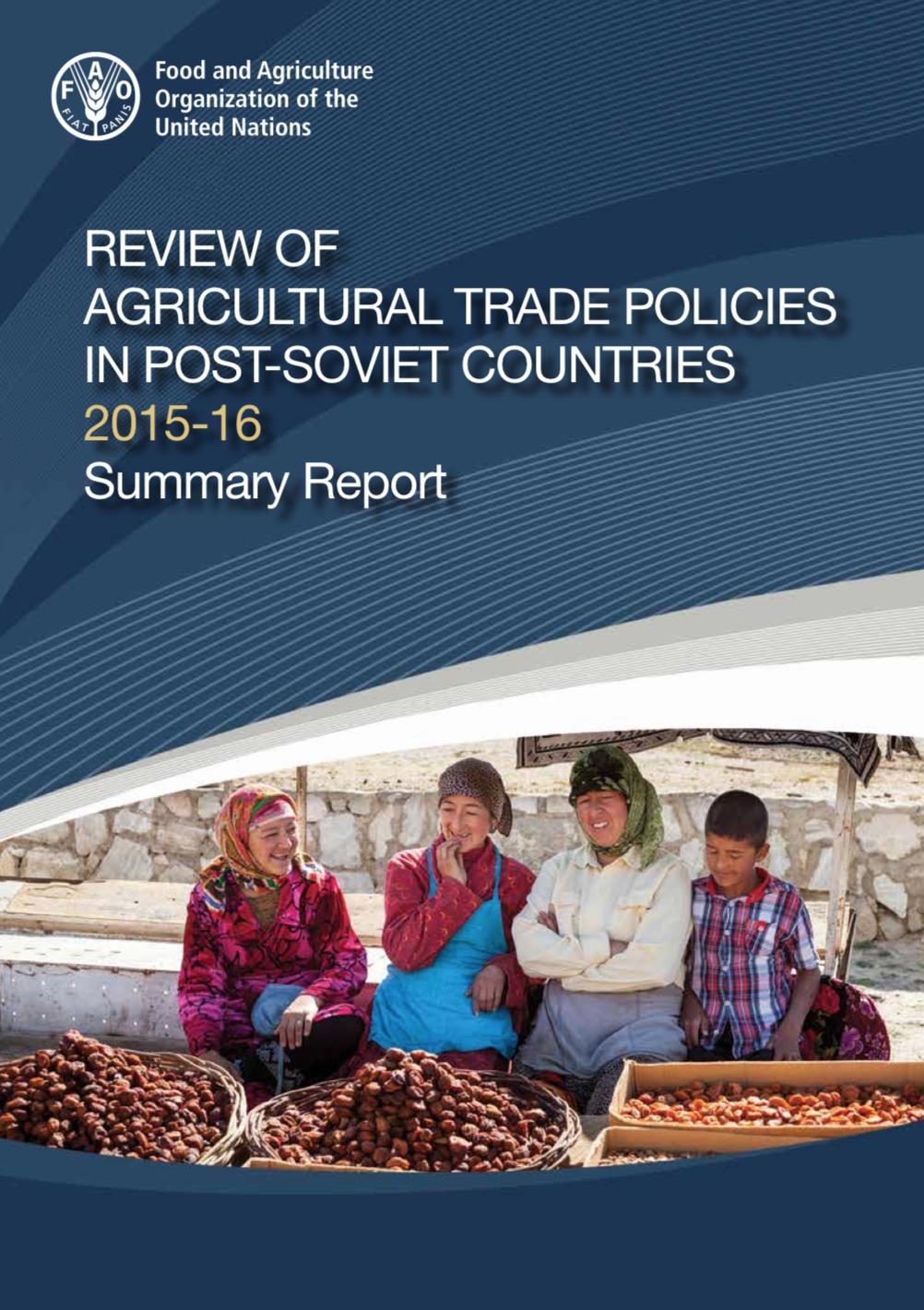
Review of agricultural trade policies in post-Soviet countries 2015-16
13/09/2017
The document is based on the publication “Review of Agricultural Trade Policies in former Soviet Union countries 2015-16” available in Russian. The main economic and political factors influencing the patterns of agrifood trade in the region during 2014 generally continued to have an impact in 2015 and 2016. In particular, a further slowdown in economic growth was observed in all countries during 2015. In addition, the depreciation of all the national currencies against the US dollar and the euro, which began in 2014, continued in 2015 and, in some cases, in 2016. Due to weaker national currencies and falling consumer demand, the total value of imports of agrifood products in dollar terms decreased in many countries. The decline in demand for agrifood products in the region and lower international prices also contributed to the reduction in the value of agrifood exports from the region. At the same time, the last two years have been marked by stronger integration processes affecting agrifood trade among several countries in the region.
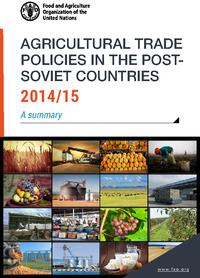
Agricultural trade policies in the post-soviet countries 2014/15
13/09/2016
The document is based on the publication “Review of Agricultural Trade Policies in post-Soviet countries 2014-15”. In the 2013-2014 period, most countries in the region registered a negative foreign trade balance in agrifood products (HS codes 1-24). The largest deficit in this product category was recorded in the Russian Federation, which had an average annual deficit over the two years of USD 23.9 billion.
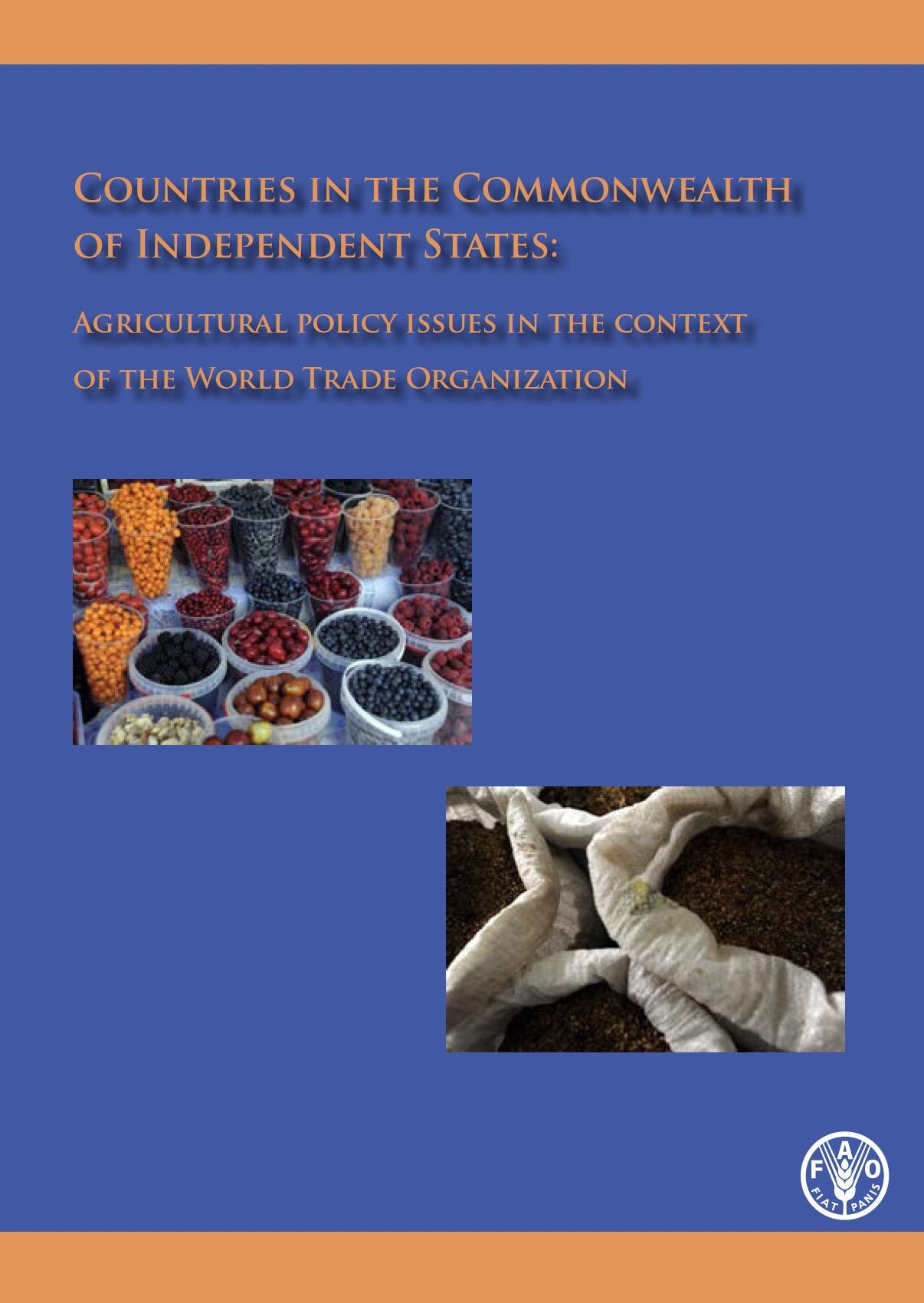
Countries in the Commonwealth of Independent States
01/01/2014
With the disintegration of the Soviet Union 15 new countries entered the world stage. The CIS countries are very different in size, economic structure and agricultural profile. The same is true even for the smaller group of seven CIS countries that are members of the World Trade Organization (WTO).
